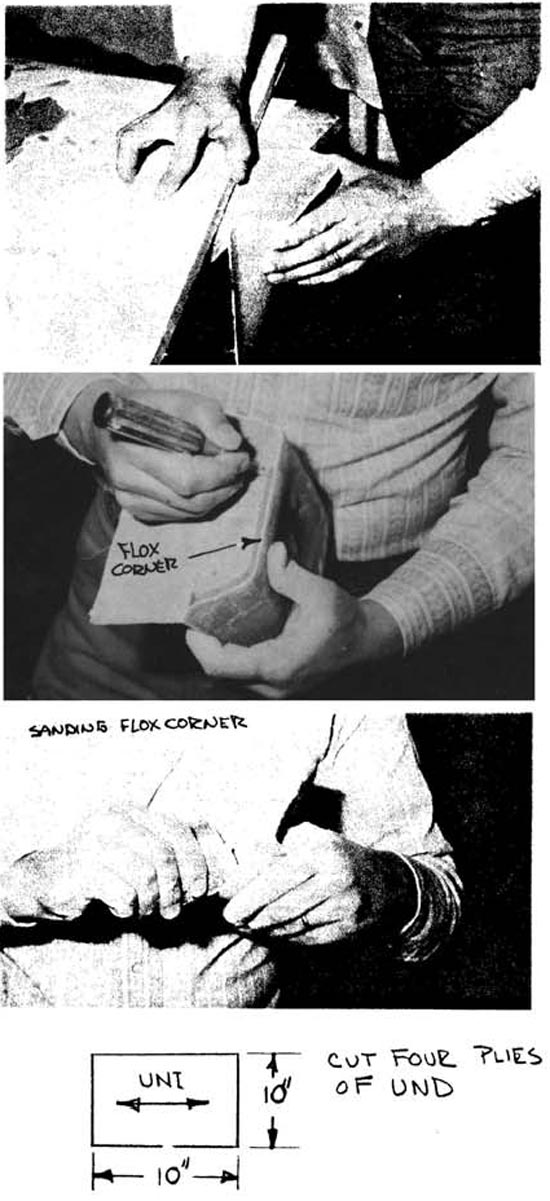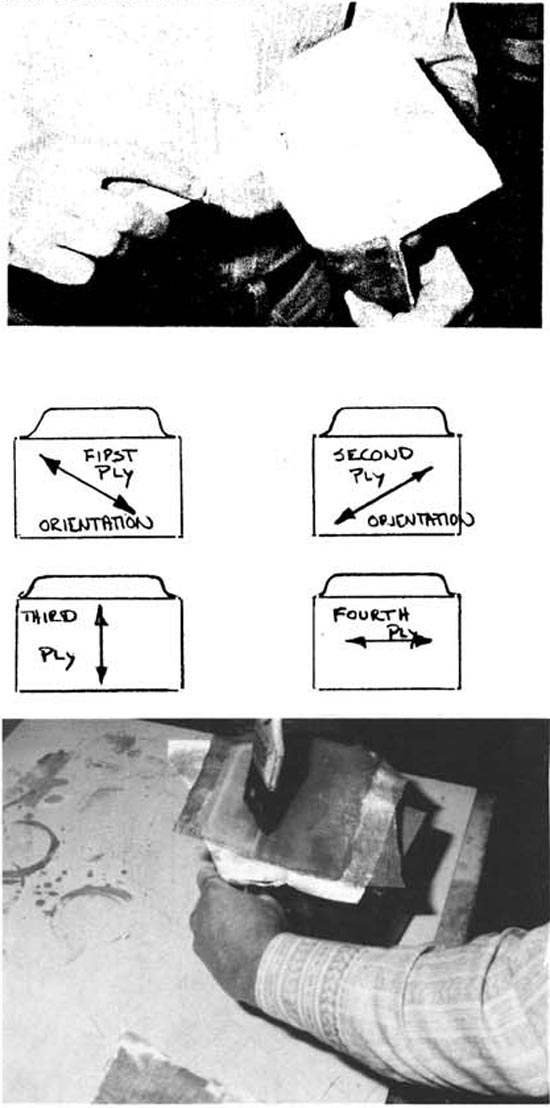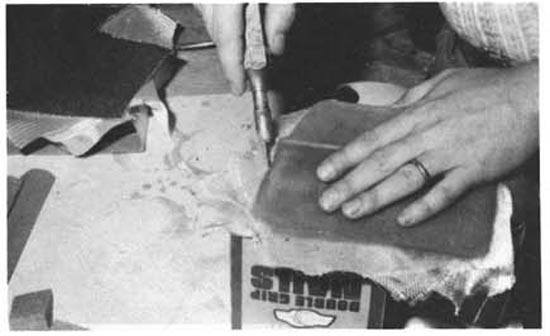Q1 Plans Chapter 3 Page 3-18
- Details
- Category: Quickie Plans
- Published: Sunday, 02 November 2008 01:00
- Written by Dan Yager
- Hits: 4815

Mix RAEF, a small batch of flox, and a small batch of micro slurry. Fill the corner with flox and slurry the foam. Lay up the four UNI plies with the orientation shown.

Knife trim the edges, After 12-hour cure, sand the edges with 100-grit sandpaper as required for smoothness and good appearance.

lt may at this time seem a bit ridiculous to use three layups, about four hours work, and two days cure, just to make a book end. But remember, this book end was not designed for ease of construction: it was designcd instead, to let you get a first hand exposure to the following operations before starting on your airplane: glass cutting, foam preparation (slurry), BID and UNI layups (flat surfaces, corners, and compound curves, flox corner, knife trim, concave and convex foam carving, glass to glass surface preparation and sanding edges. So, use this experience to your best benefit and spend the curing time studying the plans. Even if you’re experienced in glass layups, the book end is a worthwhile project to get familiar with the workability of thin BID and UND weave cloth.
AIRCRAFT MEASUREMENT REFERENCE SYSTEM
To ease the engineer’s task of defining where things go in these odd-shaped gadgets called aircraft, a fairly standard system of references has been developed. Fortunately the Quickie is so simple that an eleborate measurement system is not necessary. It is, however, convenient to use the standard terminology for reference occasionally and you should be, familiar with its meaning.
The three basic references are called butt lines, fuselage stations, and waterlines. Don’t blame us for the absurd names, we didn’t set the system up. All three are given in inches from some arbitrarily chosen reference. So, fuselage station 100 is found 100 inches away from fuselage station 0, and similarly for butt lines and waterlines. Being as lazy as anybody else, we abbreviate these as FS , BL , and WL.
CONTINUED ON NEXT PAGE



